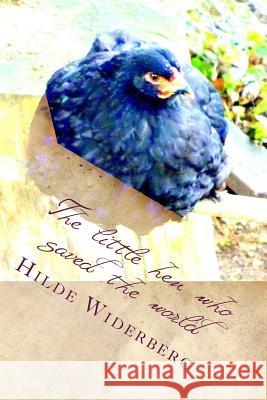The little hen who saved the world » książka
The little hen who saved the world
ISBN-13: 9781495320330 / Angielski / Miękka / 2014 / 28 str.
This is an old fairytale about the little hen who saved the world. A fairy tale is a type of short story that typically features European folkloric fantasy characters, such as fairies, goblins, elves, trolls, dwarves, giants, witches, mermaids, or gnomes, and usually magic or enchantments. Fairy tales may be distinguished from other folk narratives such as legends (which generally involve belief in the veracity of the events described) and explicitly moral tales, including beast fables. In less technical contexts, the term is also used to describe something blessed with unusual happiness, as in "fairy tale ending" (a happy ending) or "fairy tale romance" (though not all fairy tales end happily). Colloquially, a "fairy tale" or "fairy story" can also mean any farfetched story or tall tale; it's used especially of any story that not only isn't true, but couldn't possibly be true. In cultures where demons and witches are perceived as real, fairy tales may merge into legends, where the narrative is perceived both by teller and hearers as being grounded in historical truth. However, unlike legends and epics, they usually do not contain more than superficial references to religion and actual places, people, and events; they take place once upon a time rather than in actual times. Fairy tales are found in oral and in literary form. The history of the fairy tale is particularly difficult to trace because only the literary forms can survive. Still, the evidence of literary works at least indicates that fairy tales have existed for thousands of years, although not perhaps recognized as a genre; the name "fairy tale" was first ascribed to them by Madame d'Aulnoy in the late 17th century. Many of today's fairy tales have evolved from centuries-old stories that have appeared, with variations, in multiple cultures around the world. Fairy tales, and works derived from fairy tales, are still written today. The older fairy tales were intended for an audience of adults, as well as children, but they were associated with children as early as the writings of the precieuses; the Brothers Grimm titled their collection Children's and Household Tales, and the link with children has only grown stronger with time. Folklorists have classified fairy tales in various ways. The Aarne-Thompson classification system and the morphological analysis of Vladimir Propp are among the most notable. Other folklorists have interpreted the tales' significance, but no school has been definitively established for the meaning of the tales. The fairytale moves in an unreal world without definite locality or definite creatures and is filled with the marvelous. In this never-never land, humble heroes kill adversaries, succeed to kingdoms and marry princesses. The characters and motifs of fairy tales are simple and archetypal: princesses and goose-girls; youngest sons and gallant princes; ogres, giants, dragons, and trolls; wicked stepmothers and false heroes; fairy godmothers and other magical helpers, often talking horses, or foxes, or birds; glass mountains; and prohibitions and breaking of prohibitions. One universally agreed-upon matter is that fairy tales do not require fairies. Common parlance conflates fairy tales with beast fables and other folktales, and scholars differ on the degree to which the presence of fairies and/or similarly mythical beings (e.g., elves, goblins, trolls, giants huge monsters) should be taken as a differentiator. Vladimir Propp, in his Morphology of the Folktale, criticized the common distinction between "fairy tales" and "animal tales" on the grounds that many tales contained both fantastic elements and animals."
Zawartość książki może nie spełniać oczekiwań – reklamacje nie obejmują treści, która mogła nie być redakcyjnie ani merytorycznie opracowana.











